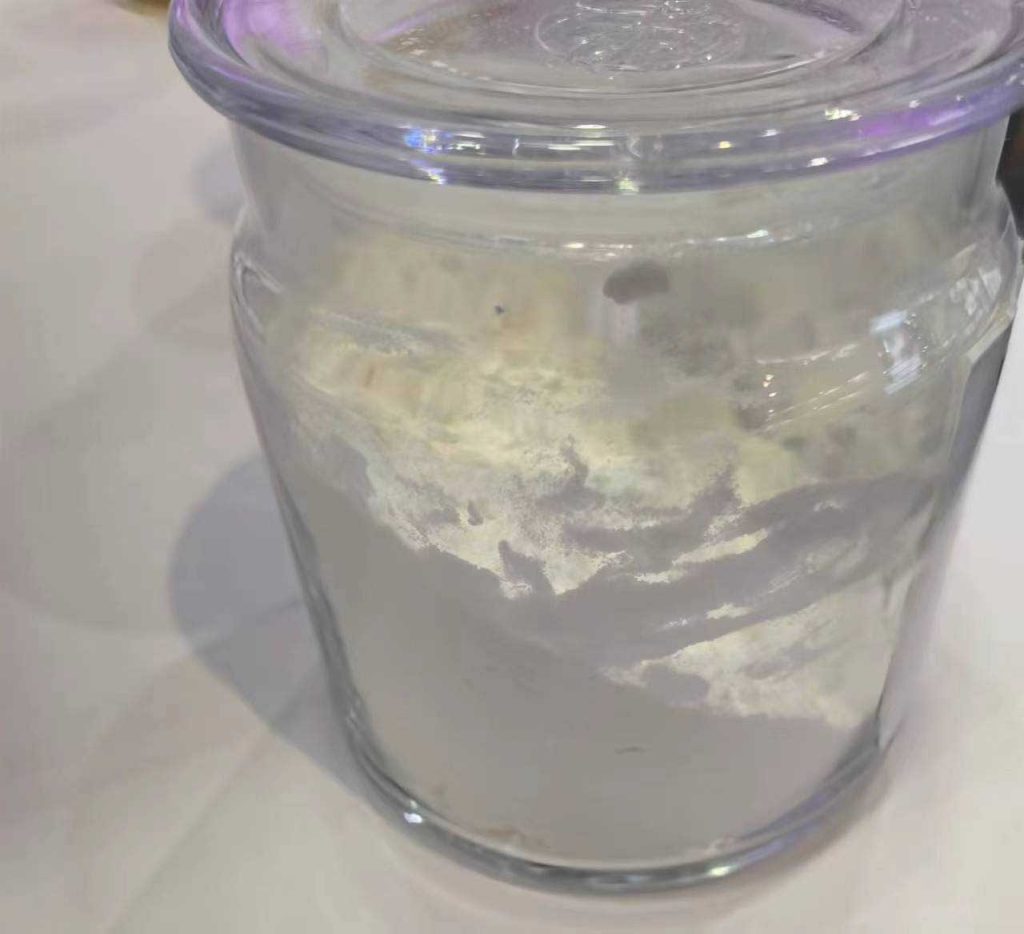Hidroksipropilmetilceluloza
Uloga hidroksipropilmetilceluloze u mortu
Funkcija hidroksipropilmetilceluloze u žbuci vrijedna je pažnje zbog povoljnih svojstava zadržavanja vode. Hidroksipropilmetilceluloza se intenzivno koristi u različitim formulacijama žbuke, uključujući zidanje, žbukanje, i žbuke za izravnavanje terena, s prvenstvenom svrhom ublažavanja krvarenja morta. U primjenama cementnih mortova, hidroksipropilmetilceluloza prvenstveno ima dvostruku ulogu zadržavanja vode i zgušnjavanja. Pridonosi povećanju plastične viskoznosti i kohezivnosti morta, čime se ublažava migracija i gubitak vode, dok istodobno povećava sposobnost zadržavanja vode.
Ugradnja odgovarajuće količine vode u mort pogoduje produljenju razdoblja hidratacije cementa. Kapacitet zadržavanja vode izravno je povezan s viskozitetom otopine celuloznog etera integriranog u žbuku. Više razine viskoznosti odgovaraju poboljšanom kapacitetu zadržavanja vode. Ova karakteristika je izražena u hidroksipropilmetilcelulozi koja pokazuje značajan učinak zgušnjavanja. Poboljšava građevinske performanse i obradivost morta, čime se olakšavaju glatkiji procesi primjene.
Hidroksipropilmetilceluloza značajno doprinosi povećanju čvrstoće prianjanja morta. Ovaj učinak ostaje čak i kada je mort izložen povišenim temperaturama. Hidroksipropilmetilceluloza ima ključnu ulogu u održavanju odgovarajuće razine vlage unutar morta, čak i u okruženjima s visokim temperaturama. Ovo svojstvo očuvanja vlage ključno je za osiguranje cjelovitosti strukturnih i ljepljivih svojstava morta u zahtjevnim uvjetima.
Što je malter?
Mort se također naziva i zidarski. Ovo je temeljno vezivno sredstvo sastavni dio građevinskih procesa. Formuliran je amalgamacijom cementnih ili vezivnih materijala, kao što su vapno ili cement, zajedno s finim agregatima poput pijeska, surki, piljevina, i hidroksipropilmetilceluloza. Voda je bitna komponenta ove mješavine, olakšavajući stvaranje kohezivne tvari. Primarna funkcija morta je uspostaviti čvrste veze između različitih građevinskih komponenti, kao što su cigle i kamenje, kapitalizirajući njegova vezivna svojstva.
Hidroksipropilmetilceluloza pridonosi karakterističnoj kvaliteti mješavine morta. Integracijom hidroksipropilmetilceluloze u smjesu morta, Spojeve sposobnosti zadržavanja vode učinkovito su poboljšane. Efekt zgušnjavanja hidroksipropilmetilcelluloze unutar minobacačke smjese povećava plastičnu viskoznost i koheziju maltera, izravno utjecati na njegov otpor migraciji vode i gubitka. Rezultat je pojačan kapacitet zadržavanja vode koji proširuje razdoblje hidratacije cementa unutar maltera.
Značajke i primjene hidroksipropilmetilceluloze
HPMC hidroksipropilmetilcelluloza ima različite značajke koje igraju glavnu ulogu u njegovim primjenama unutar minobacačkih formulacija. Ovo su nekoliko ključnih atributa koji značajno utječu na performanse maltera:
Zadržavanje vode i plastična viskoznost
Na zadržavanje vode duboko utječe ugradnja hidroksipropilmetilceluloze. Ovaj derivat celuloze učinkovito povećava sposobnost morta da zadrži vodu. Ova značajka doprinosi ublažavanju migracije vode i gubitka iz matrice morta. Njeguje se optimalno okruženje za zadržavanje vode, što ima izravan utjecaj na cjelokupni proces hidratacije cementa unutar morta. Produljenjem perioda tijekom kojeg je voda dostupna za hidrataciju cementa, povoljno se utječe na mehanička svojstva i trajnost dobivene strukture.
Utjecaj HPMC-a na plastičnu viskoznost morta jednako je vrijedan pažnje. Uvođenjem hidroksipropilmetilceluloze u smjesu morta, plastična viskoznost je povećana. Ovaj fenomen daje povećanu kohezivnost i otpornost na migraciju vode unutar morta. Povišena plastična viskoznost nadopunjuje značajku zadržavanja vode, zajednički doprinoseći ukupnoj obradivosti i karakteristikama primjene morta.
Učinak HPMC na intersticijsku otopinu cementnog morta
Međusobno djelovanje između hidroksipropilmetilceluloze i intersticijske otopine unutar cementnog morta aspekt je značajnih posljedica. Prisutnost HPMC modificira svojstva intersticijske otopine, stvarajući poboljšanu sposobnost zadržavanja vode i, posljedično, poboljšana kinetika hidratacije. Ova dinamička interakcija izravno utječe na cjelokupnu izvedbu morta, posebno njegovu adheziju, mehanička čvrstoća, i otpornost na utjecaje okoliša.
Učinak HPMC na hidrataciju cementa
Uloga hidroksipropilmetilceluloze u procesu hidratacije cementa dodatno potkrepljuje njen značaj. Stvaranjem povoljnog okruženja za zadržavanje vode i utjecaja na plastičnu viskoznost, HPMC neizravno olakšava produženu i učinkovitu hidrataciju cementa. Ovo produženo trajanje hidratacije ima izravan utjecaj na strukturni integritet i izdržljivost maltera, što rezultira snažnijem konačnom konstrukcijom.
Interakcija između HPMC i cementnog maltera
Interakcija između hidroksipropilmetilceluloze i cementnog maltera karakteriziraju zamršeni mehanizmi. Molekularna struktura HPMC -a omogućava mu učinkovito djelovanje s česticama cementa, Poboljšanje cjelokupne kohezije matrice maltera. Ova sinergija je glavna u osiguravanju sveobuhvatne distribucije HPMC -a u cijelom maltera, čime se pojačava svoja svojstva zadržavanja vode i plastične viskoznosti.
Učinci hidroksipropilmetilceluloze na mort za građevinski materijal na bazi cementa
Sljedeći su učinci hidroksipropilmetilceluloze (HPMC) na građevinskom materijalu na bazi cementa, posebno različite formulacije morta:
HPMC za mort za zidanje
Kada se integrira u sastave mortova za zidanje, hidroksipropilmetilceluloza doprinosi poboljšanom zadržavanju vode i poboljšanoj plastičnoj viskoznosti. To znači veću sposobnost morta da zadrži vlagu i odoli migraciji vode. Plastična viskoznost hidroksipropilmetilceluloze povećava kohezivnost morta, dodatno promičući njegov strukturni integritet.
Hidroksi propil metil celuloza HPMC za suhu mješavinu morta
Značaj hidroksipropilmetilceluloze u mortovima za suhe mješavine može se pripisati njezinim ključnim svojstvima koje ovaj spoj daje mortovima za suhe mješavine sposobnost modulacije i poboljšanja procesa otvrdnjavanja. Zahvaljujući sposobnostima zadržavanja vode, hidroksipropilmetilceluloza omogućuje održivo vlažno okruženje ključno za optimalnu hidrataciju cementa. Ovo produženo razdoblje hidratacije doprinosi razvoju poželjnih mehaničkih svojstava, čime se osigurava dugotrajna trajnost i čvrstoća morta.
Utjecaj hidroksipropilmetilceluloze proteže se na obradivost suhih mortova. Njegova prisutnost potiče savitljiviju i lakšu konzistenciju, što olakšava rukovanje i nanošenje morta. Ova poboljšana obradivost posebno je vrijedna u građevinskim scenarijima gdje su važni preciznost i jednolika primjena.
HPMC za mort za ispunu fuga
Jedna od osobina vrijednih pažnje koju omogućuje hidroksipropilmetilceluloza je tiksotropno ponašanje koje pokazuje mort za punjenje fuga. Tiksotropija se odnosi na svojstvo gdje tvar pokazuje smanjenu viskoznost pod mehaničkim stresom. U kontekstu morta za ispunu fuga, ova kvaliteta osigurava da mort zadrži postojanu i upravljivu viskoznost tijekom nanošenja, što mu omogućuje učinkovito prianjanje na okomite površine i unutar praznina. Tiksotropna priroda morta, djelomično pod utjecajem hidroksipropilmetilceluloze, sprječava slijeganje i osigurava da mort ostane na mjestu bez spuštanja, čime se pridonosi strukturnom integritetu dobivenog spoja.
Hidroksipropilmetilceluloza znatno pridonosi svojstvima neskupljanja morta za punjenje fuga. Kvaliteta neskupljanja ključna je za osiguravanje da mort zadrži svoj volumen i ostane čvrsto spojen unutar praznina i spojeva dok se stvrdnjava. Ova je karakteristika osobito ključna za jamčenje potpune, veza visoke čvrstoće između različitih dijelova montažnih betonskih jedinica.
HPMC za samorazlivajući mort
Samorazlivajući mort specijalizirana je vrsta morta poznata po svojoj sposobnosti stvaranja ravnomjernosti, glatke površine bez potrebe za opsežnim ručnim izravnavanjem. Ova varijanta žbuke dolazi u prethodno izmiješanom obliku, zahtijevajući dodavanje vode prije izravne primjene.
Jedna od najvažnijih prednosti koja se pripisuje prisutnosti hidroksipropilmetilceluloze unutar samonivelirajućeg morta leži u njenoj sposobnosti povećanja konzistencije i obradivosti smjese. Moduliranjem tečenja i viskoznosti morta, HPMC doprinosi samonivelirajućoj prirodi materijala. To osigurava da se mort lako širi po površini, učinkovito popunjavanje udubljenja i praznina, i na kraju daje ujednačenu i ravnu završnu obradu.
Hidroksipropilmetilceluloza poboljšava vezna svojstva samorazlivajućih mortova. Prisutnost spoja potiče kohezivnu interakciju između morta i podloge, osiguravajući učinkovito prianjanje. Ova osobina je posebno značajna u primjenama gdje se mort koristi kao podloga ili gornji sloj, gdje je jaka veza između podloge i morta ključna za postizanje trajne i pouzdane završne površine.
Koji čimbenici utječu na zadržavanje vode Hidroksipropil metilceluloza HPMC ?
Homogenost unutar smjese nastaje kao kritična odrednica zadržavanja vode hidroksipropilmetilcelluloze. Ujednačena disperzija čestica HPMC -a u matrici maltera ključna je za osiguravanje konzistentnih svojstava apsorpcije vode i zadržavanja.
Temperatura toplinskog gela predstavlja još jedan značajni faktor koji utječe Hidroksipropil metilkululoza HPMC -ovo ponašanje zadržavanja vode. Toplinska točka, Specifično za svaku hidroksipropilmetilcelulozu, označava temperaturu na kojoj spoj formira strukturu nalik gelu nakon interakcije s vodom. Ova struktura gela olakšava ulazak vode unutar matrice, Poboljšanje ukupnih mogućnosti zadržavanja vode.
Viskoznost je istaknuti faktor koji utječe na karakteristike zadržavanja vode hidroksipropilmetilceluloze. Viskoznost otopine celuloznog etera, nastao interakcijom hidroksipropilmetilceluloze s vodom, izravno utječe na njegovu sposobnost zadržavanja molekula vode. Više razine viskoznosti odgovaraju poboljšanom kapacitetu zadržavanja vode, budući da otopina može učinkovitije inkapsulirati vodu.
Finoća čestica hidroksipropilmetilceluloze značajno utječe na njihovu interakciju s vodom i, posljedično, njegovu sposobnost zadržavanja vode. Finije čestice omogućuju temeljitiju disperziju i interakciju s molekulama vode, promicanje veće apsorpcije i zadržavanja vode. Radna temperatura također se pojavljuje kao relevantan faktor oblikovanja Hidroksipropil metil celuloza HPMC -ovo ponašanje zadržavanja vode. Fluktuacije u temperaturi mogu utjecati na sposobnost spoja da formira gelaste strukture i komunicira s molekulama vode.
Očekujemo da budemo vaš dobavljač hidroksipropilmetilceluloze HPMC. Željeli bismo vam dostaviti besplatne uzorke i dragocjene informacije o našem Hidroksimetil celuloza.


